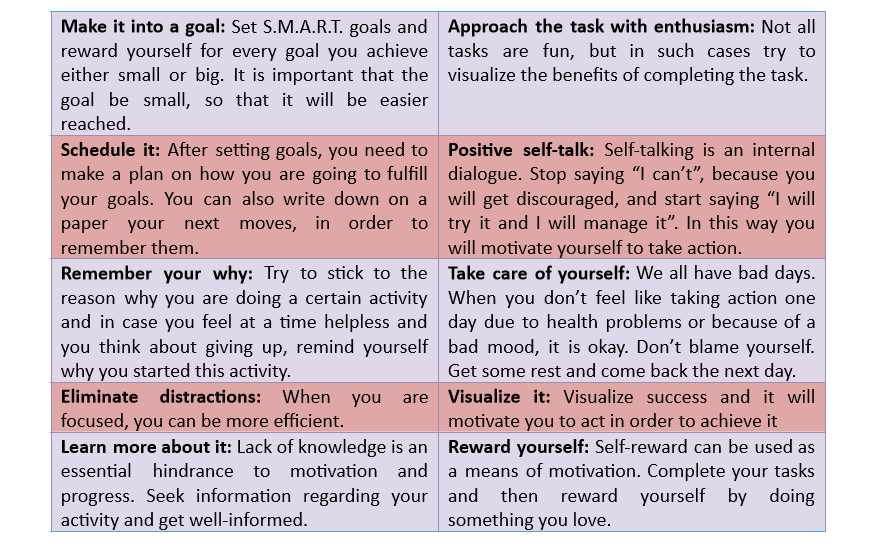Motivation in the work area

Design a motivational job
Motivation is the process that initiates, guides and maintains goal-oriented behaviors (The Psychology of What Motivates Us, 2020). It is the driving force behind human activities. Motivation can be either internal (is fired by intrinsic needs) or external (is fired by the need of money for example). Motivation in the labor market is of high importance, because motivated employees will do their best for the company and themselves to succeed. Job design is a psychological theory of motivation and it consists of five key elements (A. Robinson, 2020):
- Skill variety: A job can be more motivating, when it requires the employees to use a range of different skills and not the same set skill.
- Task identity: Task identity means to complete an identifiable task from the beginning to the end and being able to see the outcomes. Hence the job becomes more motivating. On the contrary, an employee, who contributes a small piece on several different projects and cannot see the outcomes of his contribution, may lose his/her motivation.
- Task significance: A job can raise employees’ motivation, when their contribution has an impact on the company and they feel that they play a vital role in the execution of the project.
- Autonomy: Autonomy is the level freedom of each employee to organize his/her tasks and have a flexible role. Jobs that offer autonomy can be motivating and more desirable.
- Job feedback: The last element of a motivating job is the employee to receive feedback (both negative and positive) on his/her performances throughout his/her whole tenure, so that he/she would know if there is something to improve or to be applauded for his/her contribution.
Create a motivational climate
A motivational climate in a working environment increases productivity and leads to better outcomes. Such a climate can be cultivated by using the following suggestions (Scharfenberg, 2010):
- Motivation comes from caring, not scaring. Scaring is not a successful motivation strategy. It may temporary get you what you want, but it will definitely lead to employees’ resentment and lack of motivation. On the other hand, when the supervisor shows that he/she cares and respects the employees, then the latter maximize their efforts and try harder to achieve higher performances.
- Make work fun: Definitely when you are professionally occupied, you are aiming at reaching the anticipated results. However, when there is a pleasant working environment, with humor and effective communication, employees are more motivated.
- Reward good efforts: One of the most effective ways to encourage an employee to keep doing his/her best, is by rewarding his/her efforts so far. In such cases the levels of motivation are increased.
- Accept the failure: Probably team’s efforts may not always yield successful results. In order to keep the team motivated, you have to accept the failure and try to find out what went wrong, so that the team will improve it. Avoid criticism with bad intention.
- Visualize the results: By helping the employees visualize the final result and see the big picture, their motivation is boosted and they try harder to achieve the goals.
Techniques for self – motivation
“Self-motivation is, in its simplest form, the force that drives you to do things” (Skills You Need, n.d.). Self-motivation is an important skill, and as a skill, it can be practiced and learned. It can improve quality of life and helps to achieve your goals. Four elements of self-motivation have been identified; personal drive to achieve, commitment to personal or organizational goals, taking initiatives and optimism. Below some self-motivation techniques are listed (Jennifer, 2020).


